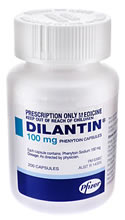Top Class Actions’s website and social media posts use affiliate links. If you make a purchase using such links, we may receive a commission, but it will not result in any additional charges to you. Please review our Affiliate Link Disclosure for more information.

Dilantin is a type of drug designed to treat several types of seizures. The drug is considered a step above older drugs, which tended to leave a patient seriously sedated. The healthcare community considers the drug indispensible. In fact, the World Health Organization considers the drug a basic staple of any functioning healthcare system. However, a subset of patients may experience a dangerous autoimmune reaction called SJS, which starts with a Dilantin rash.
A Dilantin rash is the first symptom of SJS. In SJS, the body’s immune system goes haywire, and begins attacking the skin as it would an invading germ. It starts with flu-like symptoms, including fever, chills, and generalized muscle aches as the immune system kicks into high gear.
Hours or days later, the patient develops and actual Dilantin rash on the skin, which rapidly escalates to blisters, sores and ulcers. In particularly serious cases, the damage can spread to the eyes and the surface of the internal organs. It can take weeks for the reaction to stop, and months, if not years for a person’s skin to heal from SJS.
However, in many cases, the damage may be permanent. Survivors may face debilitating scarring, blindness due to eye damage, and impaired organ function for the remainder of their lives. Depending on the severity of the reaction, the mortality rate can range from 5 percent to 40 percent.
The most serious cases of SJS can escalate to Toxic Epidermal Necrolysis. TEN is the most deadly form of SJS. In this form of the disorder, patches of the skin die and slough off, leaving burn-like wounds. In fact, the damage so closely resembles thermal burns that intensive care physicians often treat the disorder in their burn wards.
SJS is a relatively rare condition. It is known that the reaction is almost always triggered by various medications, including Dilantin. However, it is very difficult to predict who exactly will develop a reaction like the Dilantin rash.
In general, Dilantin Stevens Johnson Syndrome lawsuits are filed individually by each plaintiff and are not class actions.
Do YOU have a legal claim? Fill out the form on this page now for a free, immediate, and confidential case evaluation. The attorneys who work with Top Class Actions will contact you if you qualify to let you know if an individual lawsuit or class action lawsuit is best for you. Hurry — statutes of limitations may apply.
ATTORNEY ADVERTISING
Top Class Actions is a Proud Member of the American Bar Association
LEGAL INFORMATION IS NOT LEGAL ADVICE
Top Class Actions Legal Statement
©2008 – 2024 Top Class Actions® LLC
Various Trademarks held by their respective owners
This website is not intended for viewing or usage by European Union citizens.
Get Help – It’s Free
Join a Free Dilantin Stevens Johnson Syndrome Class Action Lawsuit Investigation
If you or a loved one were diagnosed with Stevens Johnson Syndrome (SJS) or toxic epidermal necrolysis (TEN) after taking a prescribed or over-the-counter medication, you may be eligible to take legal action against the drug’s manufacturer. Filing an SJS lawsuit or class action lawsuit may help you obtain compensation for medical bills, pain and suffering, and other damages. Obtain a free and confidential review of your case by filling out the form below.
An attorney will contact you if you qualify to discuss the details of your potential case at no charge to you.
Oops! We could not locate your form.












